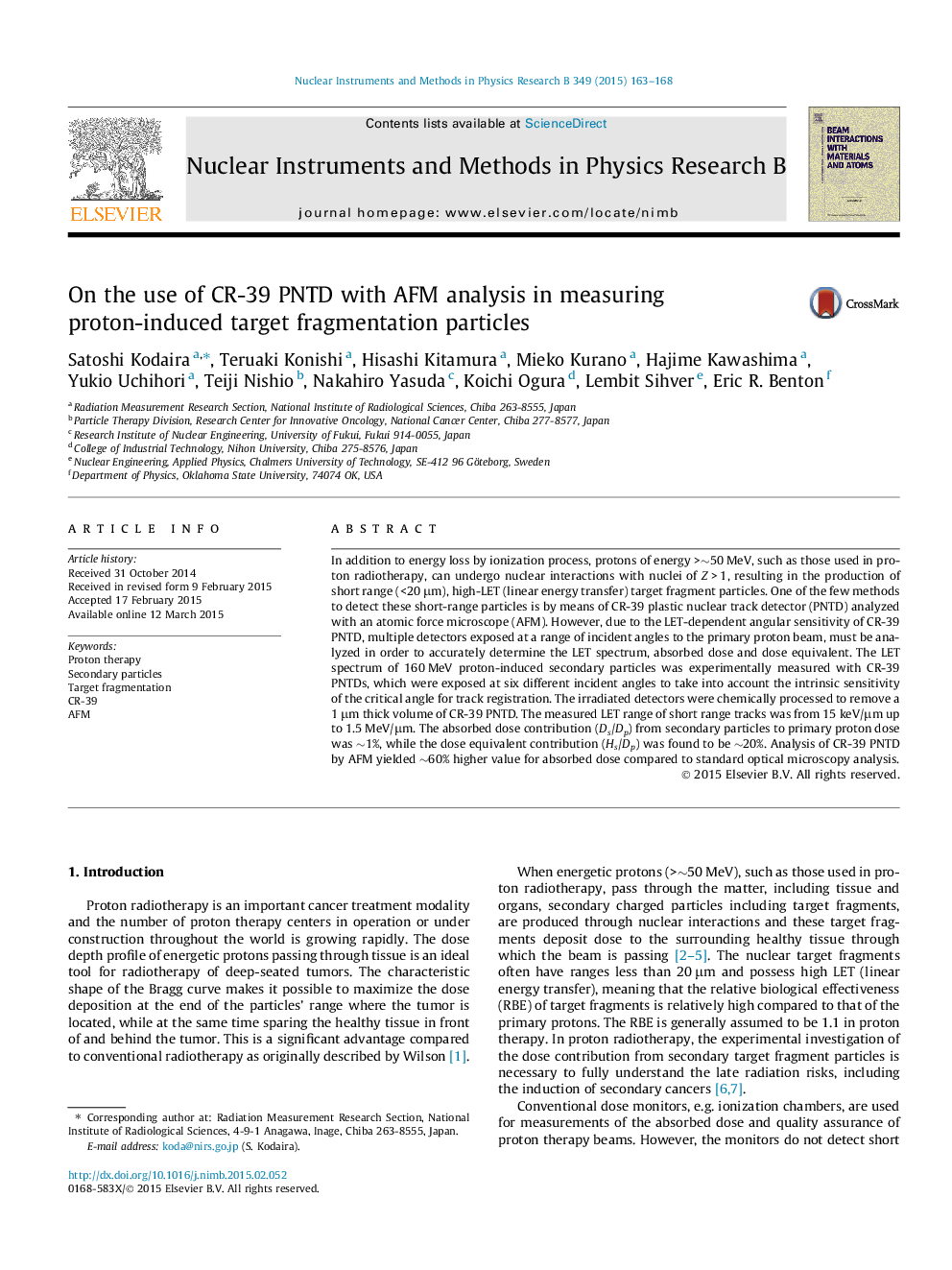| Article ID | Journal | Published Year | Pages | File Type |
|---|---|---|---|---|
| 1680230 | Nuclear Instruments and Methods in Physics Research Section B: Beam Interactions with Materials and Atoms | 2015 | 6 Pages |
In addition to energy loss by ionization process, protons of energy >∼50 MeV, such as those used in proton radiotherapy, can undergo nuclear interactions with nuclei of Z > 1, resulting in the production of short range (<20 μm), high-LET (linear energy transfer) target fragment particles. One of the few methods to detect these short-range particles is by means of CR-39 plastic nuclear track detector (PNTD) analyzed with an atomic force microscope (AFM). However, due to the LET-dependent angular sensitivity of CR-39 PNTD, multiple detectors exposed at a range of incident angles to the primary proton beam, must be analyzed in order to accurately determine the LET spectrum, absorbed dose and dose equivalent. The LET spectrum of 160 MeV proton-induced secondary particles was experimentally measured with CR-39 PNTDs, which were exposed at six different incident angles to take into account the intrinsic sensitivity of the critical angle for track registration. The irradiated detectors were chemically processed to remove a 1 μm thick volume of CR-39 PNTD. The measured LET range of short range tracks was from 15 keV/μm up to 1.5 MeV/μm. The absorbed dose contribution (Ds/Dp) from secondary particles to primary proton dose was ∼1%, while the dose equivalent contribution (Hs/Dp) was found to be ∼20%. Analysis of CR-39 PNTD by AFM yielded ∼60% higher value for absorbed dose compared to standard optical microscopy analysis.
